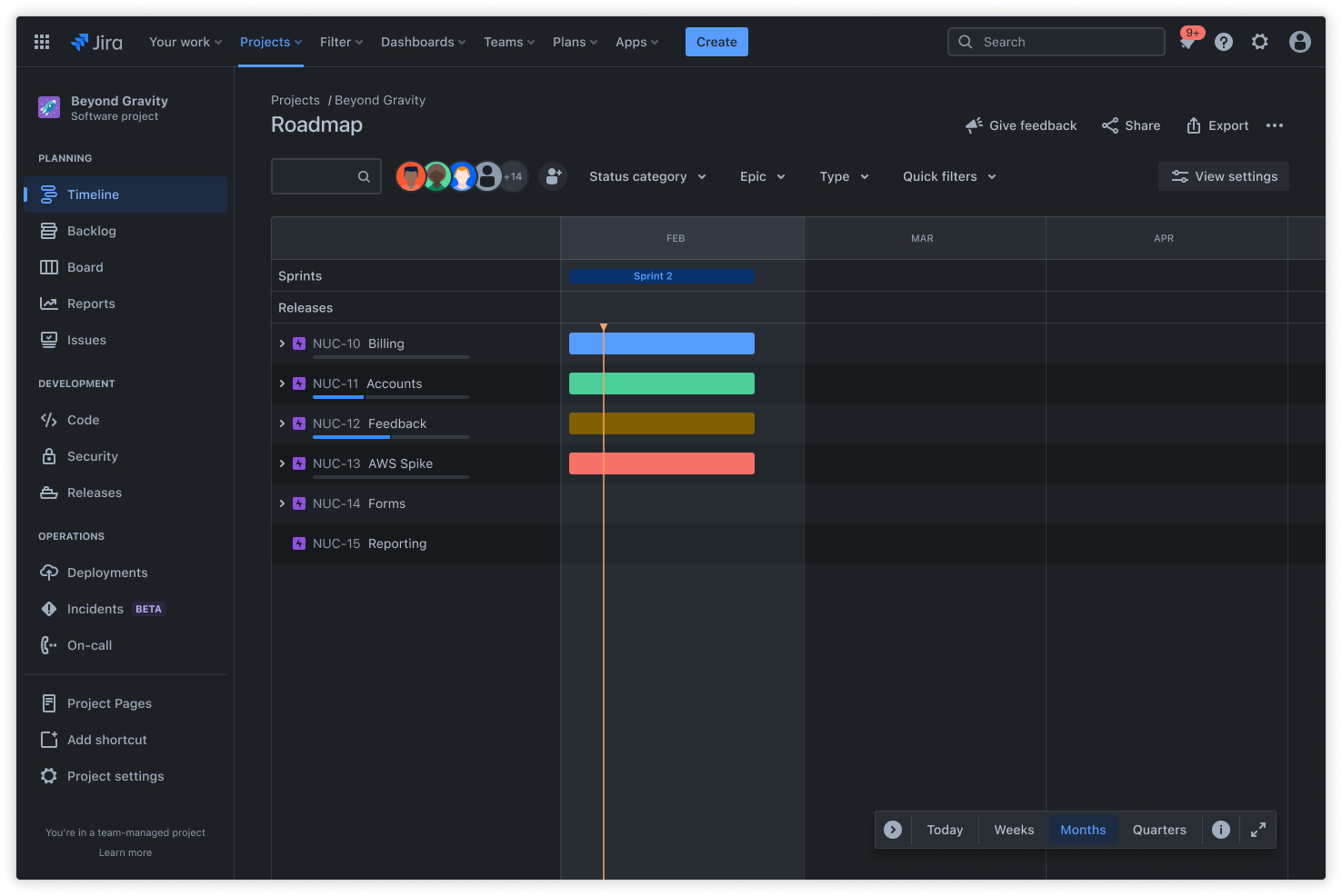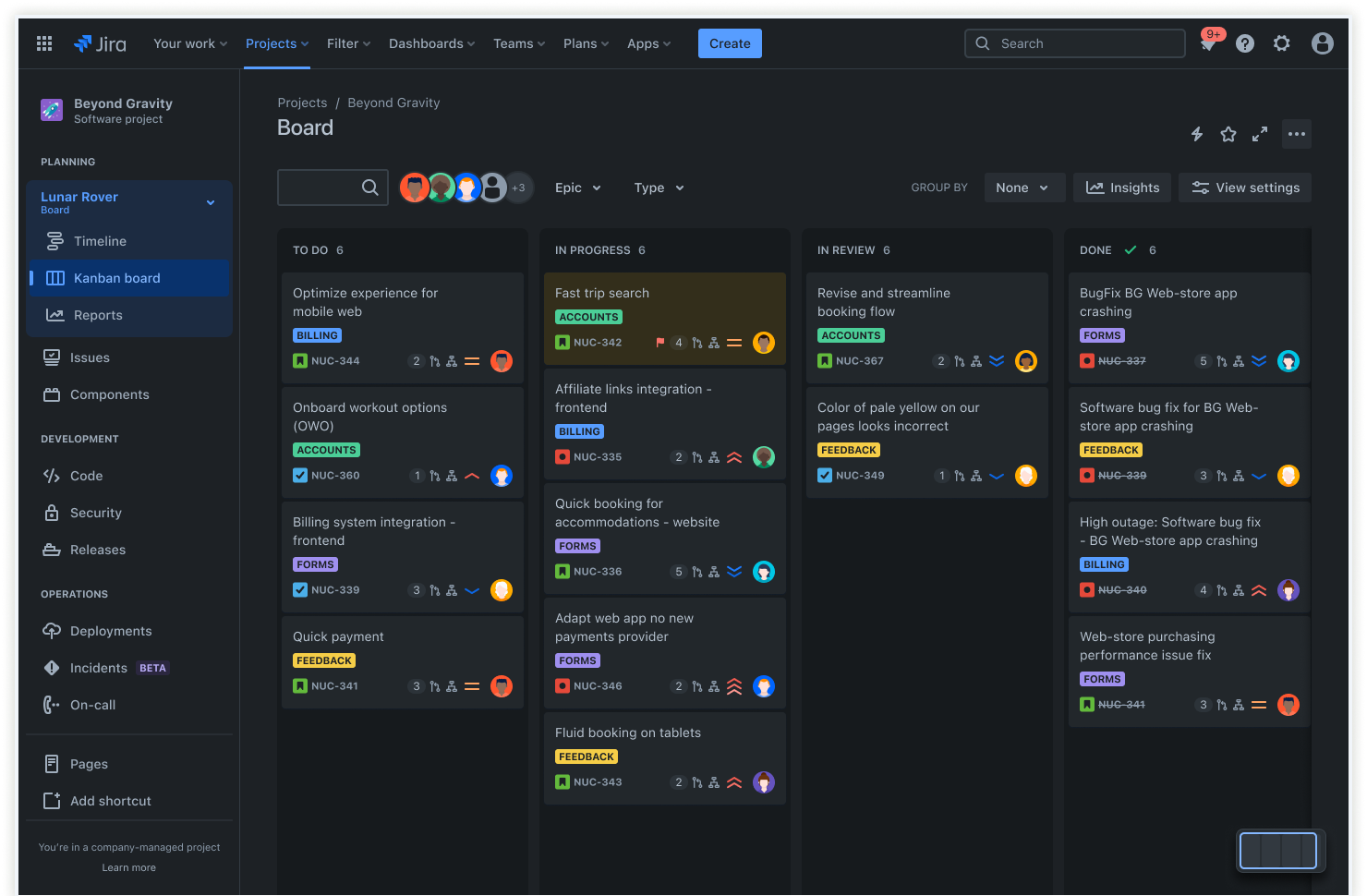In today's dynamic world, technology powers organizations at every level. But with an array of tools and never-ending lists of choices, navigating the tech landscape can seem overwhelming. The solution to simplifying this process is creating a technology roadmap.
A technology roadmap is a strategic blueprint highlighting how an organization will use technology to achieve its goals. It can be the secret weapon for creating a vision for the future while navigating technological advancements and ensuring they align with a company’s goals.
This article dives into the concept of a technology roadmap, explaining its purpose and providing the steps to create one that will ensure a smooth and successful tech journey.
What is a technology roadmap?
A technology roadmap is a company's blueprint for navigating the ever-evolving world of technology. It's a strategic project planning tool highlighting the vision, goals, and critical milestones for developing and adopting new technologies.
The roadmap details initiatives planned over a specific project timeframe to ensure everyone is on the same page about advancements and how they will contribute to the company's goals.
Types of technology roadmaps
Various types of technology roadmap examples serve unique purposes. For example, a project plan roadmap shows a project from start to finish, while product roadmaps chart the development and release of software or hardware products.
In addition, platform roadmaps concentrate on the underlying infrastructure that supports various applications. Technical roadmaps explore the broader adoption of specific organizational technologies, while application roadmaps focus on the development and evolution of software applications.
Determining which roadmap best supports an organization’s goals is essential to providing an efficient plan that connects all the necessary details and functions, leading to positive outcomes.
Benefits of technology roadmaps
Technology roadmaps streamline decision-making and ensure tech investments align with business goals. A well-defined roadmap connects technology initiatives with a company's strategic objectives.
Roadmaps also provide a clear path for decision-making, resource allocation, and project prioritization. Consider it as an outline of the "what," "when," and "why" of tech initiatives that enable informed resource allocation decisions. This is essential to ensure critical projects are adequately supported and initiatives prioritized.
Translating a roadmap into reality requires effective project management tools. Platforms such as Jira can streamline processes and empower teams to plan projects, define individual tasks within the projects, and track progress in real-time. With clear visibility of deadlines and deliverables, Jira helps ensure the tech roadmap moves projects from conception to completion.
Elements of a technology roadmap
A well-crafted technology roadmap is a detailed plan for navigating a company's technological evolution. Key elements include:
- Goals and objectives: SMART goals (specific, measurable, achievable, relevant, and time-bound) goals ensure clarity and direction.
- Timelines: The timeline is the roadmap schedule, displayed visually through a Gantt chart. It outlines project management phases to guarantee a shared understanding of the project duration and dependencies.
- Key milestones: These moments mark significant progress toward achieving the goals and can include product launches, system upgrades, or completing specific development phases.
- Resource requirements: A technology roadmap identifies the resources needed for each project, facilitating informed decisions about allocation and potential gaps.
- Dependencies: The roadmap identifies dependencies between initiatives, ensuring the completion of upstream projects before downstream projects begin.
- Risks: The roadmap acknowledges each initiative's potential risks and lists proactive mitigation strategies.
Performance metrics: It defines key performance indicators (KPIs) to track progress and the overall impact of technology initiatives on business goals.
By incorporating these elements, the technology roadmap acts as a comprehensive guide. It confirms alignment with business objectives, facilitates informed decision-making, and paves the way for successful technology adoption.
How to create a technology roadmap

Once a technology roadmap's core purpose and applications are understood, the next step is creating it, which requires collaboration and strategic thinking. Following these best practices as a guide for the creation process will ensure the roadmap is clear and actionable and becomes a valuable tool for the organization.
Define strategic objectives
Strategic objectives are the high-level targets that define a company’s desired future state. They bridge the gap between the vision and the actions outlined in the technology roadmap.
It’s essential to articulate the objectives and ensure the roadmap supports:
- The company’s vision
- Key SMART objectives
- Internal buy-in and alignment with the technology roadmap
Assess current state
It's essential to understand the company’s current state. A comprehensive assessment of its technology provides a clearer insight into existing systems, processes, and capabilities. This step includes:
- Gathering a cross-functional team with representatives from IT, operations, and other relevant business units.
- Creating an inventory of systems with a list of hardware, software, and cloud-based solutions used within the company.
- Mapping processes and existing workflows to identify technology integrations.
- Completing a capability audit to evaluate the strengths and weaknesses of the current technology stack and identify where technology excels or is outdated.
- Conducting user interviews and surveys to get feedback from those who interact with the technology.
- Comparing a comprehensive view of the current state with the strategic objectives to create a gap analysis and identify gaps between existing capabilities and the technology required to achieve the long-term vision.
Gather stakeholder input
Stakeholder input offers a deeper understanding of a company's technology landscape and ensures the roadmap addresses its needs. This input provides diverse perspectives regarding needs and pain points, the power to prioritize technology requirements, and a sense of ownership when stakeholders feel heard.
To gather this input, consider targeted interviews, organizing departmental workshops, and distributing surveys and questionnaires.
Prioritize initiatives
A technology roadmap is full of initiatives, but resources are finite. Prioritization is paramount to ensure the roadmap focuses on projects with the most significant impact. Evaluate the initiatives by considering the following:
- The impact on objectives
- Ability to address gaps
- The effort vs. impact
- Required dependencies and timing
- Comprehensive risk assessment
Allocate resources and manage risks
While the technology roadmap is a blueprint for success, blueprints need builders, materials, and plans to manage the unexpected. This is where resource allocation and risk management come into play.
When allocating resources, consider financial, human, and technological resources.
To mitigate and manage risk, identify possible risks that could impede progress. Develop mitigation strategies for each risk, including contingency planning, securing additional resources, and establishing performance monitoring measures.
Monitor progress
The best roadmaps aren't static documents but dynamic tools that require continuous monitoring and adaptation. Establishing mechanisms for project tracking and comparing progress against the technology roadmap is essential.
Consider implementing status updates to track the progress of each initiative. Define KPIs and regularly monitor progress against these metrics. Use a project tracking template or tracking tools like project management software such as Jira to track task completion, deadlines, and resource allocation.
Best practices for creating technology roadmaps
Technology roadmaps guide a company's technological journey, but creating one goes beyond listing the initiatives.
Here are best practices to make sure the tech roadmap serves as a powerful tool to drive innovation and achieve goals:
- Cross-functional collaboration: Involve stakeholders from various teams in the creation process to gain diverse perspectives and ensure the roadmap addresses and aligns with the company's needs and broader business objectives.
- Alignment with strategic goals: Ensure the roadmap directly supports the company's strategic objectives and that each initiative contributes to achieving the long-term vision.
- Focus on value: Prioritize initiatives that deliver tangible value by considering increased efficiency, cost savings, or potential revenue growth.
- Flexibility: A flexible and adaptable roadmap is essential. Revisit, refine, and rewrite portions of the roadmap as needed.
Monitoring and measurement: Establish mechanisms for monitoring progress, tracking KPIs, and identifying where adjustments might be necessary.
Streamline the process with Jira
Project management tools such as Jira offer features that streamline the roadmap creation process. These tools include visual roadmaps, goal alignment, agile planning, and real-time visibility.
By following these best practices and leveraging tools like Jira, a technology roadmap will guide your team toward a successful future fueled by innovation and strategic technological advancements.
Create technology roadmaps with Jira

A well-crafted technology roadmap is empowering and aligns advancements with strategic goals.
Consider using Jira, a project management tool designed to streamline workflows for organization and progress tracking. It offers a robust suite of features that complement the creation and management of technology roadmaps.
- Visualize the roadmap with boards: Break initiatives into manageable tasks using digital Kanban boards and move them across columns representing stages of development. Jira’s free Kanban board template can help you visualize your technology roadmap today!
- Break down silos with issues: Break down an enormous technology project scope into bite-sized, actionable “issues” and capture essential details, status updates, and discussions.
- Maintain alignment with timelines: Create interactive timelines that map work items, dependencies, and releases to foster transparency and keep stakeholders informed.
- Monitor progress with dashboards: Get a centralized view of all projects, assignments, and achievements with real-time insights.
- Gain insights with reports: Use pre-built reports to identify trends and forecast performance.
-
Hit the ground running with templates: Leverage Jira's preconfigured templates to save time and work more efficiently.
Ready to streamline the tech roadmap creation and management process? Try Jira for Free today.
Technology roadmaps: Frequently asked questions
What’s the purpose of a technology roadmap?
A technology roadmap is a strategic plan that outlines the vision, goals, and key milestones for developing and adopting new technologies. It maps a course toward a more technologically advanced future and ensures technology investments directly contribute to achieving a company's broader strategic objectives.
What are the fundamentals of technology roadmapping?
- Define objectives: Outline the overall vision and strategic goals for technology adoption.
- Assess current state: Create a comprehensive inventory of existing technology infrastructure, processes, and capabilities and identify strengths and challenges to prioritize initiatives and address critical gaps.
- Prioritize initiatives: Evaluate proposed initiatives based on their potential impact on achieving strategic objectives and addressing gaps. Prioritize initiatives that deliver the most impactful advancements.
- Allocate resources: Allocate financial resources, human capital, and new technologies to support the implementation of the prioritized initiatives.
- Monitor progress: Establish ways to track progress and monitor performance metrics, such as regular status updates and visual dashboards.
What tools can you use for technology roadmapping?
There is a toolbox of options to consider for technology roadmapping, including:
- Project management software: Tools like Jira are project planning and management powerhouses.
- Specialized roadmapping software: Software solutions specifically designed for technology roadmapping have targeted features such as strategic alignment capabilities, visualization tools, and scenario planning.
- Collaborative platforms: Collaboration platforms like Slack or Microsoft Teams can gather stakeholder input and foster discussions.